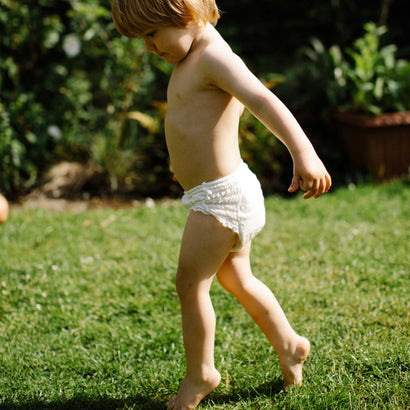No one likes a stuffy nose or a tight chest, especially your little one. So what should you do when you can tell your baby’s tiny little airways are blocked up?
First, determine which type of congestion is causing your baby discomfort so you can care for them correctly.
Before we get into the rest of this blog post about nasal congestion and chest congestion, please note that we are not doctors, and the following information is anecdotal. This post should not replace the advice of a doctor or pediatrician.
Now, onto how to help a congested baby.
Nasal vs. Chest Congestion
Since babies are so small, their airways are closer together, making it difficult to tell where the congestion is. Before addressing nasal or chest congestion head-on, you must decipher one type from the other.
Nasal congestion is very common. If your baby has a mucus-y or runny nose, it’s a sign they have nasal congestion. On the other hand, chest congestion commonly presents as noisy or more noticeable breathing or coughing, which results from fluid in the lungs.
Nasal Congestion Symptoms
- A blocked nose
- Runny nose
- Sniffling
- Coughing
- Snoring when asleep
- Difficulty when feeding
- Noisy breathing
- Noticeable, labored breathing
Chest Congestion Symptoms
- Coughing
- Wheezing
- Rapid breathing
- Heavy, labored breathing
- Difficulty when feeding

How to Help a Baby’s Congestion: 9 Home Remedies
Under certain circumstances, it might be necessary to visit a doctor to help your baby breathe better (we’ll talk more about that later in this post). But if none of your baby’s congestion symptoms are setting off alarm bells in your head, you can try the following remedies at home.
- Make sure your baby is adequately hydrated. Drinking more water may help thin their mucus, but don’t force it.
- Remove potential irritants from their surroundings, such as smoke or chemical fumes.
- Sit them up straight so that their airways are completely unblocked.
- Use a humidifier in their nursery.
- Add one or two drops of saline to their nostril using a small syringe.
- Try warm baths since the steam can help clear congestion.
- Gently massage their nasal bridge, forehead, temples, and cheekbones.
- If your little one is old enough, teach them to blow their nose.
- Use a nasal aspirator– especially before feeding– to help clear your baby’s nasal passageway. Place the aspirator just inside of their nostril, squeeze it, then release it to suck the mucus out of their sinuses.
If your baby’s symptoms are severe and concerning, lasting more than a few days, or you believe they were exposed to RSV or another contagious illness, consult your pediatrician.
How to Help a Congested Baby Sleep
If you’ve experienced congestion, you probably noticed that it’s hard to get through the night without waking up often or coughing. The same thing happens to babies.
To help a congested baby sleep, it’s vital to treat night congestion as you would in the daytime. First, remain calm. Second, try any home remedies we mentioned before bedtime to see if they help.
Third, you can hold your baby upright while they sleep, which means you’ll have to sit up. To ensure you get your rest, take turns with your partner.
We don’t recommend propping your baby up on a pillow or laying them on an inclined mattress because it can lead to injury or SIDS but please research to make your own informed decision.
When Does Your Baby Need to See a Doctor?
If your baby presents any of the following symptoms, please see a doctor as soon as possible and avoid trying any of the home remedies we mentioned first.
- Flaring nostrils
- A panicked look
- Grunting or moaning at the end of each breath
- Breathing too hard or fast to be able to feed
- Ribs pulling in on each breath
- Blue tint to the skin around the lips and nails, in particular
We hope this post was helpful and can come in handy the next time your baby becomes congested.










